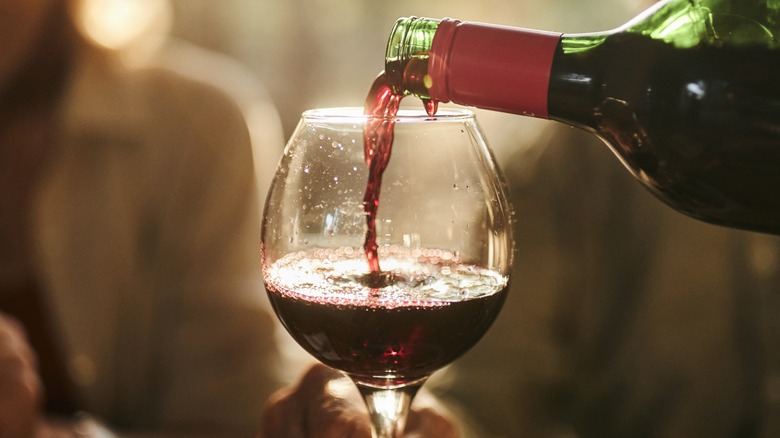What Does The Supérieur Designation Mean On A Wine Label?
As you browse bottles at the store, some wine labels may catch your eye with impressive graphics and punny names. If you're choosing bottles based on what you see, you're not alone, but you can learn to use labels to your advantage since the pasted stickers are more than mere aesthetic designs. From region of production to grape varieties used, the fonts and names printed on wine labels aren't just for show — they have meaning. Knowing how to decode wine labels can help you select which bottle to enjoy, and we're here to help.
If you notice "Bordeaux Supérieur" printed on a label, you may assume that this indicates a better-quality wine than a traditional Bordeaux regional wine from France. You're not wrong. Wines marked with this supérieur designation have met certain regulations that separate these blends into a stricter category than what a typical bottle of Bordeaux falls under. Beneath the umbrella of Bourdeaux wines, you'll find Bordeaux AOC and Bordeaux Supérieur.
Bordeaux AOC can offer rich, fruity, and easy sips, but these blends haven't been aged for as long as those in the Supérieur category. To be labeled Bordeaux Supérieur, the grape vines also must be planted more densely than plots meant for regular Bordeaux. Winemakers plant grapes in this way so that vines are forced to compete for nutrients in the soil and become stronger and more durable in the process. The result can lead to a richer-tasting wine than what is sampled in traditional Bordeaux blends.
Bordeaux Supérieur wine is in a league of its own
Similar to any other red Bordeaux, Bordeaux Supérieur must use only Cabernet Sauvignon, Cabernet Franc, Petit Verdot, Merlot, Malbec, and Carmenère grapes. The grapes collected to make Bordeaux Supérieur wines are riper than those used to make traditional Bordeaux blends, however, and fewer grapes are collected when they are finally harvested. Packed with a greater sugar content, these mature grapes lead to wines made with slightly higher alcohol levels than what is typically found in a standard Bordeaux AOC bottle.
The differences don't end there. Before a bottle of Bordeaux Supérieur can be sold, these prized red wines must be aged in oak barrels for at least one year. Thankfully, you won't need to blow your budget to taste a silky glass of a quality Bordeaux Supérieur. For around $20 — and sometimes even cheaper at places like Costco — you can sample a bottle of one of these balanced oaky blends with spiced cherry and stone fruit notes and toast to your knowledge of this unique wine classification.

